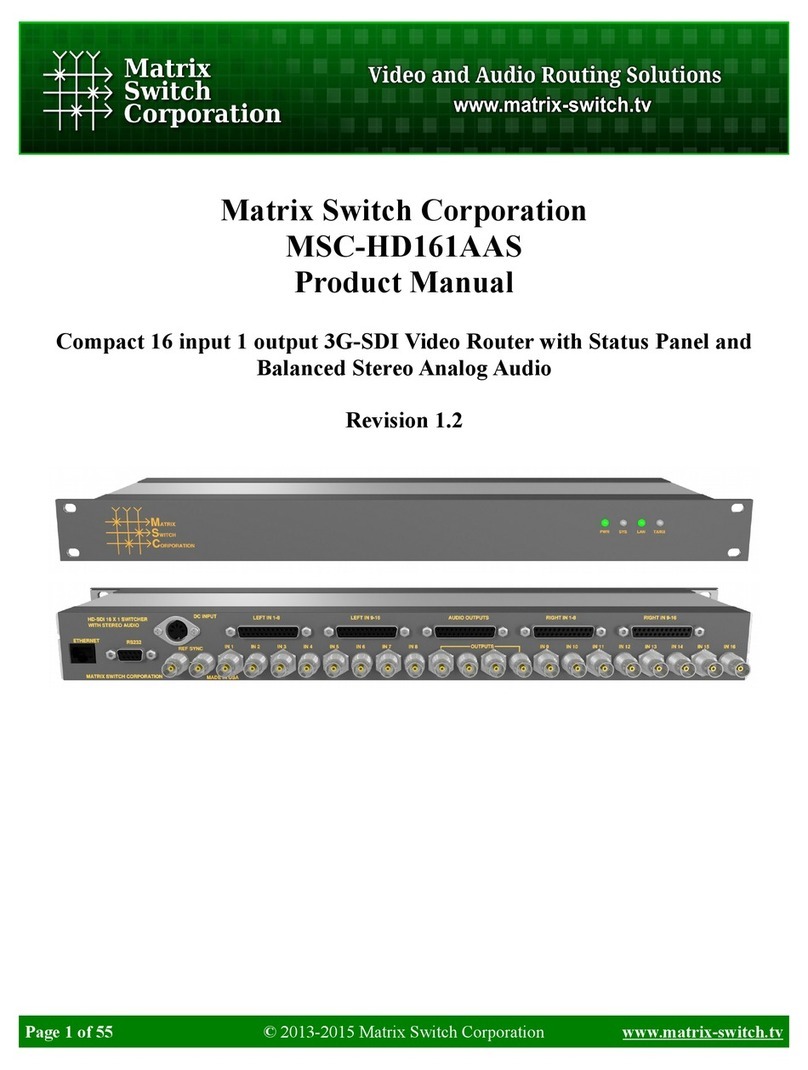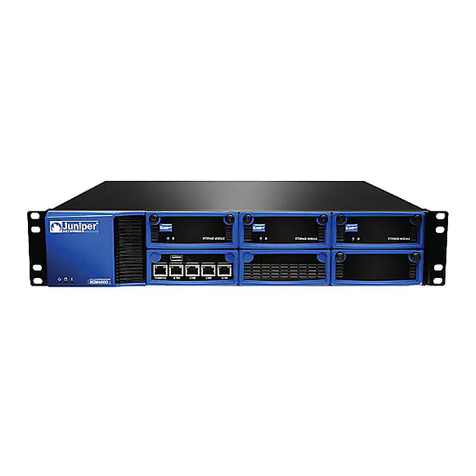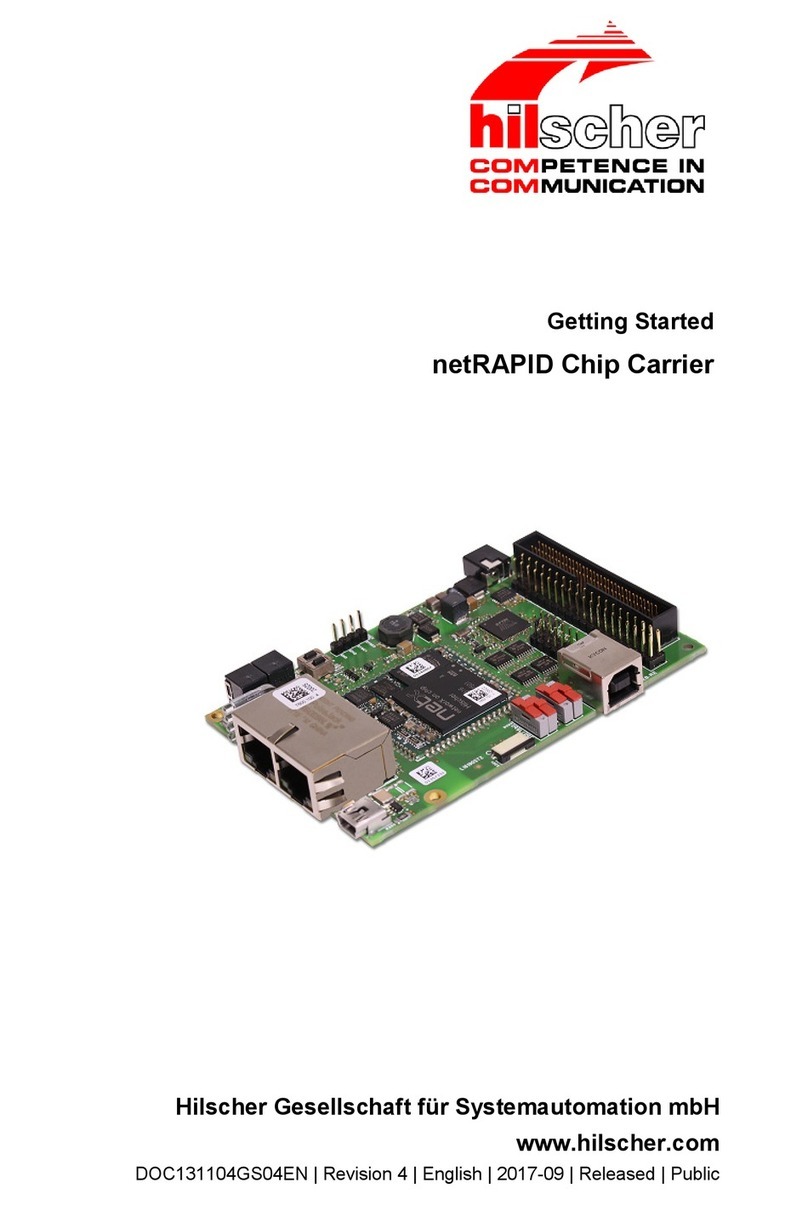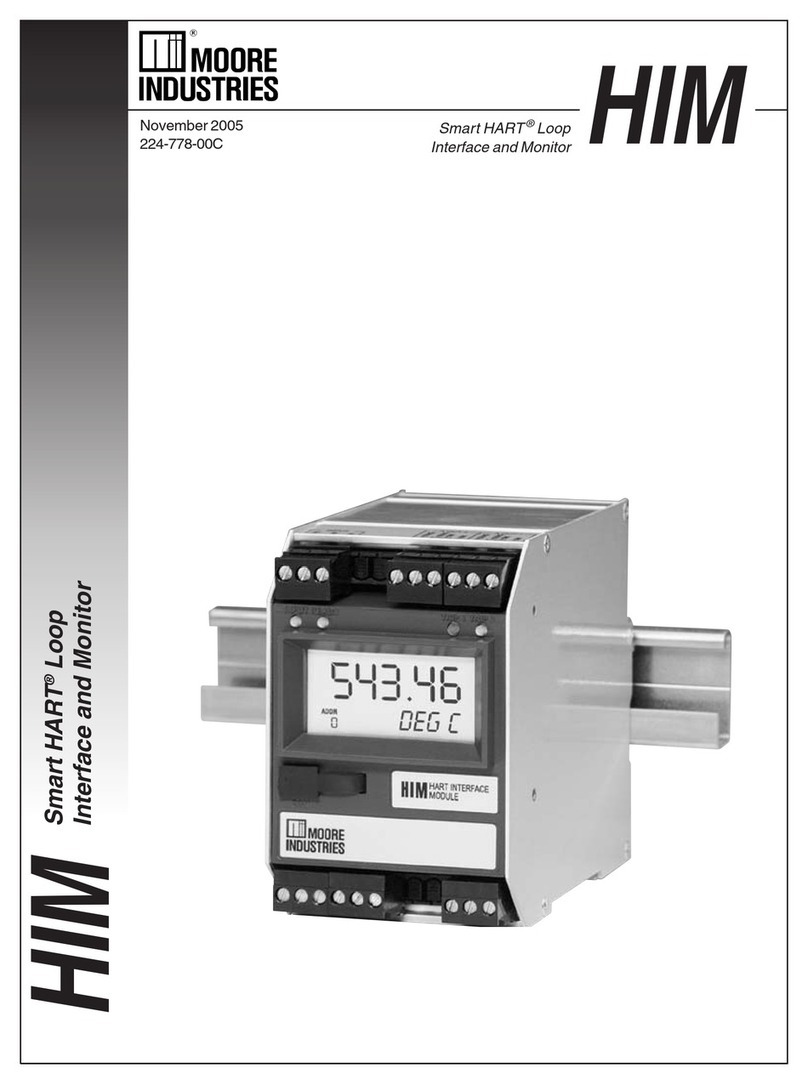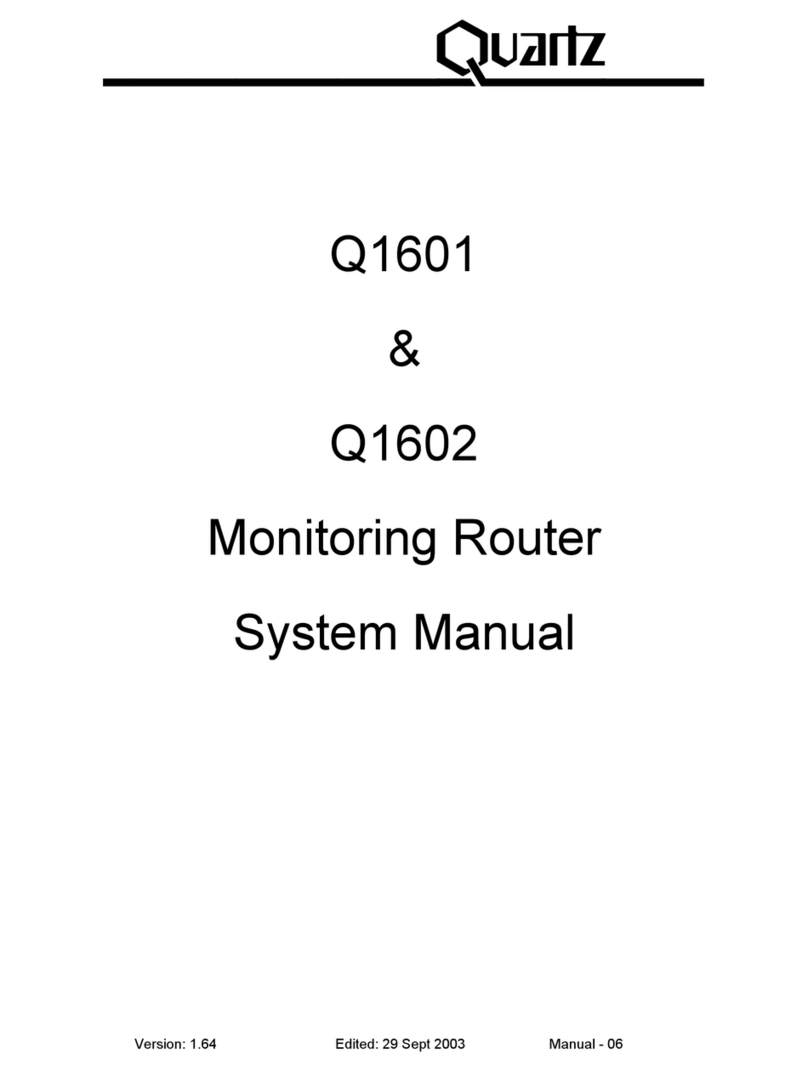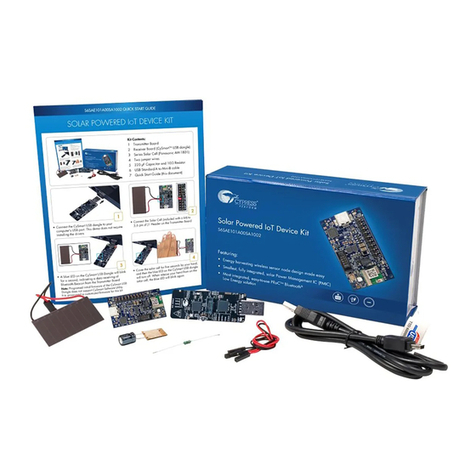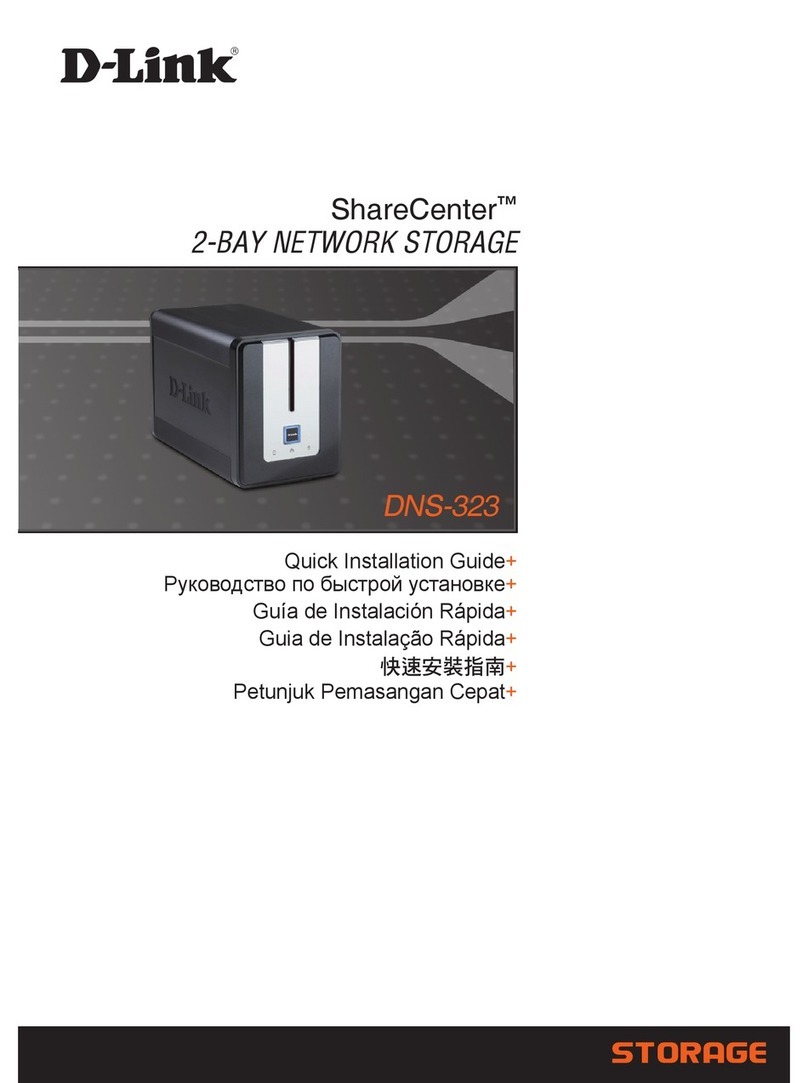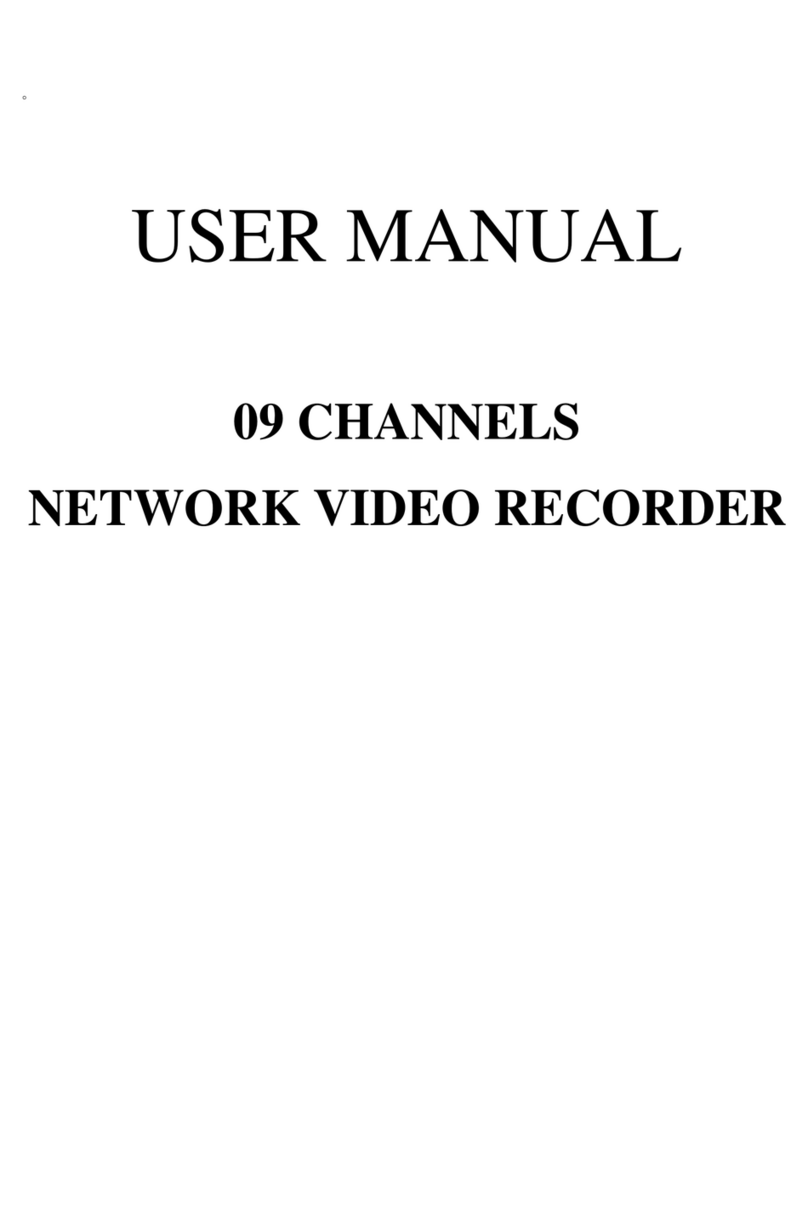DB Audio DS10 User manual

DDS10
Manual 1.5 en

S
y
m
b
o
l
s
o
n
t
h
e
p
r
o
d
u
c
t
P
l
e
a
s
e
r
e
f
e
r
t
o
t
h
e
i
n
f
o
r
m
a
t
i
o
n
i
n
t
h
e
m
a
n
u
a
l
.
W
A
R
N
I
N
G
!
D
a
n
g
e
r
o
u
s
v
o
l
t
a
g
e
!
General information
DS10 Manual
Version: 1.5 en, 01/2016, D2027.EN .01
Copyright © 2016 by d&b audiotechnik GmbH; all rights
reserved.
Keep this manual with the product or in a safe place
so that it is available for future reference.
We recommend you to regularly check the d&b website for the
latest version of this manual.
When reselling this product, hand over this manual to the new
owner.
If you supply d&b products, please draw the attention of your
customers to this manual. Enclose the relevant manuals with the
systems. If you require additional manuals for this purpose, you
can order them from d&b.
d&b audiotechnik GmbH
Eugen-Adolff-Strasse 134, D-71522 Backnang, Germany
T +49-7191-9669-0, F +49-7191-95 00 00
[email protected], www.dbaudio.com

Explanation of graphical symbols
The lightning symbol within a triangle is intended to alert
the user to the presence of uninsulated "dangerous
voltages" within the unit’s chassis that may be of
sufficient magnitude to constitute a risk of electric shock
to humans.
The exclamation point within a triangle is intended to
alert the user to the presence of important operating and
service instructions in the literature accompanying the
product.
Before using this product, carefully read the
applicable items of the following safety instructions.
1. Keep these instructions for future reference.
2. Read these instructions.
3. Heed all warnings.
4. Follow all instructions.
5. Keep water or other liquids away from the unit. Do not place
liquid filled containers, for example beverages, on top of the
unit.
6. Do not operate the unit while it is wet or standing in liquid.
7. Always operate the unit with the chassis ground wire
connected to the electrical safety earth. Do not defeat the
safety purpose of a grounding-type plug. A grounding-type
plug has two blades and a third grounding prong. The third
prong is provided for your safety. If the provided plug does
not fit into your outlet, consult an electrician for replacement of
the obsolete outlet.
8. Do not use this unit if the power cord is damaged or frayed.
Protect the power cord from being walked upon or pinched,
particularly at the plugs and the point where it exits from the
apparatus.
9. The unit is intended for use in a 19" rack. Follow the mounting
instructions. When a rack on wheels is used, exercise caution
when moving the loaded rack to avoid injury from tipping
over.
10. Unplug this apparatus during lightning storms or when unused
for long periods of time.
11. Lay all cables connected to the unit carefully so that they
cannot be crushed by vehicles or other equipment and that no
one can either step on them or trip over them.
12. Refer all servicing to qualified service personnel. Servicing is
required when the apparatus has been damaged in any way
such as:
– Power-supply cord or plug is damaged.
– Liquid has been spilled into the unit.
– An object has fallen into the unit.
– The unit has been exposed to rain or moisture.
– The unit does not operate normally.
– The unit was dropped or the chassis is damaged.
– Do not remove top or bottom covers. Removal of the covers
will expose hazardous voltages. There are no user
serviceable parts inside and removal may void the warranty.
13. Use the mains plug as the disconnecting device and keep it
readily accessible. If the mains plug is not readily accessible
due to mounting in a 19" rack, then the mains plug for the
entire rack must be readily accessible.
14. An experienced user must always supervise the equipment,
especially if inexperienced adults or minors are using the
equipment.
IMPORTANT SAFETY INSTRUCTIONS
d&b DS10 Manual 1.5 en 3

1. DS10 Audio network bridge....................................... 5
1.1. Intended use............................................................................ 5
1.2. Scope of supply...................................................................... 5
2. Technical specifications.................................................. 7
3. Startup.................................................................................. 8
3.1. Overview................................................................................. 8
3.2. Rack mounting......................................................................... 9
3.3. Mains connection.................................................................... 9
3.4. Front panel............................................................................ 10
3.4.1. BYPASS/NETWORK......................................................... 10
3.4.2. DIGITAL OUT 1 – 4.......................................................... 10
3.4.3. DIGITAL IN 1 – 4............................................................. 10
3.4.4. ETH1 - ETH4...................................................................... 11
3.4.5. SYNC ERROR/SUBSCRIBED........................................... 12
3.5. Rear panel............................................................................. 13
3.5.1. ETH 5/MODE ETH 3........................................................ 13
3.5.2. DIGITAL OUT 5 – 16....................................................... 13
3.6. Meta data............................................................................. 13
4. Rack connections........................................................... 14
4.1. Use with d&b Touring rack I/O panel................................ 14
5. Application examples.................................................. 15
5.1. Redundant............................................................................. 16
5.2. FoH........................................................................................ 17
5.3. Wireless control with external switches............................... 18
5.4. Wireless control without external switches.......................... 19
6. DS10 Firmware update............................................... 20
7. Manufacturer's Declarations.................................... 21
7.1. EU declaration of conformity (CE symbol).......................... 21
7.2. WEEE Declaration (Disposal).............................................. 21
7.3. Licenses and patents............................................................. 21
Contents
d&b DS10 Manual 1.5 en4

1.1. Intended use
The d&b DS10 is a 16 output channel break-out box connecting
the Dante audio network to the AES3 digital audio standard.
In addition, 4 x AES3 input channels are provided for use as a
simple break-in box, e.g. at Front of House.
Configuration and control of the device is performed using the
Dante Controller software, which enables networkwide routing
from one single software platform. The software is available for
free download at www.audinate.com.
The DS10 is mainly intended for use within the d&b Touring rack
assemblies.
NOTICE!
The device complies with the electromagnetic compatibility
requirements of EN 55103 (product family standard for audio,
video, audio-visual and entertainment lighting control apparatus for
professional use) for the environments E1 (residential), E2 (business
and commercial), E3 (outdoor use in urban areas) and E4
(outdoor use in rural areas).
Acoustic interference and malfunctions may occur if the unit is
operated in the immediate vicinity of high-frequency transmitters
(e.g. wireless microphones, mobile phones, etc.). Damage to the
device is unlikely, but cannot be excluded.
1.2. Scope of supply
Before starting up the device, please verify the shipment for
completeness and proper condition of the items.
If there is any sign of obvious damage to the unit and/or the
power cord, do not operate the unit and contact your local dealer
from whom you received it.
Z4010 DS10
Pos. Qty. d&b Code Description
[1] 1 Z4010 d&b DS10
Audio network bridge.
Including:
[2] 1 Z2610.xxx Power cord
(specific to country).
1 D2027.EN .01 DS10 Manual.
1. DS10 Audio network bridge
d&b DS10 Manual 1.5 en 5

Z5563 DS10 Rack upgrade kit
Pos. Qty. d&b Code Description
[1] 1 Z4010 d&b DS10 Audio network
bridge.
Including:
[2] 1 Z2610.130 Power cord (powerCON/
powerCON.
Used to connect the device to
auxiliary powerCON socket
at the rear of the mains
distributor.
[3] 2 E7500.024 AES/EBU XLR cable.
Used to connect the digital
outputs 1/2 and 3/4 to the
digital inputs D1/2 and D3/4
of the I/O panel.
[4] 1 K6018.025 CAT5e patch cable.
Used to connect the ETH 3
connector of the device to the
ETH 1 connector of the I/O
panel.
1D2027.EN .01 DS10 Manual.
Note: For rack assembly instructions please refer to
Þ Chapter 4. "Rack connections" on page 14.
d&b DS10 Manual 1.5 en6

Power supply
Mains connector powerCON®
Rated mains voltage 100 to 240 V, 50 – 60 Hz
Overvoltage protection Up to 400 V AC
Power consumption 10 W (max)
Digital inputs
Connectors 3 pin XLR female, AES3
Pin assignment 1 = GND, 2 = AES Signal, 3 = AES Signal
Input impedance 110 ohms
Sampling 32 – 192 kHz
Synchronization Sample Rate Converter (SRC)
Digital outputs
Connectors 3 pin XLR male, AES3
Pin assignment 1 = GND, 2 = AES Signal, 3 = AES Signal
Output impedance 110 ohms
Sampling 48/ 96 kHz
Synchronization Dante network
Network
Connectors etherCON®
built-in 5-port Ethernet switch
100/1000 Mbit
Controls and indicators
BYPASS/NETWORK Toggle switch
Switch port modes/Audio loss RGB LEDs
SYNC ERROR LED indicator red
SUBSCRIBED (RX Subscription) LED indicator green
Dimensions and weight
Height x width x depth 1 RU x 19" x 232 mm
1 RU x 19" x 9.1"
Weight 3.75 kg / 8.26 lb
2. Technical specifications
d&b DS10 Manual 1.5 en 7

3.1. Overview
Front panel
[1] BYPASS/NETWORK switch
Refer toÞ Chapter 3.4.1. "BYPASS/
NETWORK" on page 10.
[2] XLR male digital outputs 1-4 (AES3).
Refer to Þ Chapter 3.4.2. "DIGITAL
OUT 1 – 4" on page 10.
[3] XLR female digital inputs 1-4 (AES3)
with Sample Rate Converters (SRCs)
Refer to Þ Chapter 3.4.3. "DIGITAL
IN 1 – 4" on page 10.
[4] etherCON® Ethernet switch ports 1-4
with dedicated indicators for:
– Ethernet link/Activity indicator.
– Ethernet Gigabit indicator.
– Switch port mode indicator.
Refer to Þ Chapter 3.4.4. "ETH1 -
ETH4" on page 11.
[5/6] SYNC ERROR and SUBSCRIBED
indicators.
Refer to Þ Chapter 3.4.5. "SYNC
ERROR/SUBSCRIBED"
on page 12.
Rear panel
[7] powerCON® Mains connector socket.
Refer toÞ Chapter 3.3. "Mains
connection" on page 9.
[8] etherCON® Ethernet switch port 5.
Refer to Þ Chapter 3.5.1. "ETH 5/
MODE ETH 3" on page 13.
[9] XLR male digital outputs 5-16 (AES3).
Refer to Þ Chapter 3.5.2. "DIGITAL
OUT 5 – 16" on page 13.
3. Startup
d&b DS10 Manual 1.5 en8

3.2. Rack mounting
The enclosure provides three different positions for the rack ears
enabling different rack mounting options inside a d&b Touring rack
assembly or any other rack assembly.
The corresponding positions and their intended purpose are shown
in the table below:
Flat:
Intended for any rack assembly.
Pos. 1:
Used when mounted above the I/O panel.
Pos. 2:
Used when mounted above the amplifier.
3.3. Mains connection
WARNING!
Potential risk of electric shock.
The device is a protective class 1 unit. A missing earth (ground)
contact may cause dangerous voltages in the housing and controls
and may lead to electric shock.
– Connect the unit to mains power supplies with protective earth
only.
– If there is any sign of obvious damage to the power cord
and/or mains connector, do not use the power cord and
replace it before further use.
– Please ensure the mains connector is accessible at any time to
disconnect the unit in case of malfunction or danger.
If the mains plug is not readily accessible due to mounting in a
19" rack, then the mains plug for the entire rack must be
readily accessible.
– Do not connect or disconnect the powerCON® mains
connector under load or live.
Before connecting the device to mains voltage, check that the
mains voltage and frequency correspond to the specifications on
the rating label above the mains connector socket on the rear
panel of the unit.
A powerCON® mains connector socket [7] is fitted on the rear
panel and an appropriate power cord [2] is supplied.
d&b DS10 Manual 1.5 en 9

3.4. Front panel
3.4.1. BYPASS/NETWORK
BYPASS/NETWORK switch
The BYPASS/NETWORK switch allows the use of the DS10 as an
AES3 distribution amplifier. When set to “BYPASS” the digital
inputs are routed (with negligible latency) to all outputs. That
means Inputs 1-4 are routed simultaneously to outputs 1-4, 5-8,
9-12 and 13-16 as shown in the graphic opposite.
In “BYPASS” mode, the network switch is still fully operative (for
example for use in control traffic), and the DS10 is shown in Dante
Controller. However, no Dante routing is allowed from or into the
device, and the device does not participate in the Dante master
clock algorithm (i.e., it cannot act as Clock Master). The Network
Switch Mode can still be configured from Dante Controller, and
the corresponding port modes will be shown by the port LEDs.
When the switch is set to “NETWORK”, the DS10 operates as a
normal Dante device.
The bypass switch can be operated while the device is working.
When switching from “NETWORK” to “BYPASS”, the output
channels are routed from the DS10 digital inputs as described
above, and all devices on the Dante network that were receiving
audio from the DS10 stop receiving immediately. When switching
from “BYPASS” to “NETWORK”, these devices start receiving the
audio from DS10 again, and the "RX Subscriptions" in the DS10
that were in place before switching to “BYPASS” are restored.
Note: When the DS10 is powered off while in bypass mode,
the "RX Subscriptions" will not be re-established (all RX
channels will be un-subscribed instead).
3.4.2. DIGITAL OUT 1 – 4
Two digital output connectors (OUT 1/2 and OUT 3/4) are
provided and are intended to feed the AES signal to the inputs
D1/2 and D3/4 of the I/O panel within a d&b Touring rack
assembly.
3.4.3. DIGITAL IN 1 – 4
In addition, two digital input connectors (IN 1/2 and IN 3/4) are
provided to allow the signal bridge to act as a break-in box with a
maximum of four AES3 input channels per signal bridge.
Note: Sample Rate Converters (SRC) are used internally on
both inputs.
BYPASS/NETWORK switch
Bypass routing
d&b DS10 Manual 1.5 en10

3.4.4. ETH1 - ETH4
The DS10 provides a 5-port Ethernet switch for different network
topologies, redundancy and advanced functions.
Four connectors (ETH1 - ETH4) are provided on the front panel
while a fifth port (ETH 5) is provided on the rear panel.
Network switch modes and functions
The device supports four different switch modes, which are
intended for different applications and network topologies.
According to the mode, the Ethernet ports assume different roles,
which are listed in the table below:
Note: The switch modes can be accessed from
"Dante Controller Þ Device Þ Device View
Þ Network Config".
Mode ETH 1 ETH 2 ETH 3 ETH 4 ETH 5
Switched Primary Primary Primary Primary Primary
Redundant +
Multicast Filter
Primary Secondary Primary with Multicast
Filter*
Primary with Multicast
Filter*
Primary with Multicast
Filter*
Redundant Primary Secondary Primary Secondary Primary
Redundant +
VLAN
Primary Secondary VLAN** VLAN** VLAN**
*Primary with Multicast Filter:
This port is connected to the Primary network, but the Multicast
audio is filtered out. The port is particularly suited for connecting
devices which do not need to send or receive Dante audio, such as
applicable d&b amplifiers or WLAN Access Points for wireless
control using d&b R1 V2.
Note: Specifically, all IP Multicast packets are filtered out,
except packets with Destination addresses 224.0.0.230,
224.0.0.231 and 224.0.0.251.
Please note that Dante Controller does not operate on wireless
interfaces.
**VLAN:
This port set is configured as a completely independent switch,
forming a separate network. There is no logical connection
between the VLAN ports and the Primary and Secondary ports.
Use this configuration if you want to keep Dante audio separated
from other Ethernet data (e.g. lighting protocols, control data …).
Note: Dante Controller must be connected to the Primary
and/or Secondary network.
d&b DS10 Manual 1.5 en 11

LED indicators
Each etherCON® connector provides the following LED indicators:
[4a] Ethernet link/Activity indicator (green).
[4b] Ethernet Gigabit indicator (yellow).
[4c] Switch port mode indicator (RGB-LED).
The color coding is as follows:
–Yellow: PRImary.
–Green: SECondary.
–Blue: VLAN.
–Orange: PRImary +FILTER (with Multicast filter).
In addition, the switch mode indicator on each port flashes when
the signal bridge detects a subscribed audio channel is not
available on that port, in this way allowing for faster network
troubleshooting. For example, if the Secondary link of the mixing
console is interrupted, the switch mode indicators of the ports
configured as Secondary will flash.
3.4.5. SYNC ERROR/SUBSCRIBED
SYNC ERROR Illuminates red, when the signal bridge cannot
synchronize to the Dante network.
In addition, when you click the IDENTIFY
button in Dante Controller, the SYNC ERROR
LED will flash rapidly for 2 seconds. This allows
you to physically identify each DS10 when
there is more than one device on the network
(for more details, please refer to the Dante
Controller User Guide).
SUBSCRIBED Illuminates green, when any of the signal
bridge outputs has a configured subscription.
d&b DS10 Manual 1.5 en12

3.5. Rear panel
3.5.1. ETH 5/MODE ETH 3
A fifth Ethernet port is provided on the rear panel which is intended
for the internal Ethernet wiring within a d&b Touring rack assembly.
Note: The ETH 5 port operates in the same port mode as
ETH 3 (Refer to Þ "Network switch modes and functions"
on page 11).
3.5.2. DIGITAL OUT 5 – 16
In addition, six digital output connectors are provided on the rear
panel to allow further AES channels to be used if more than four
AES channels are required.
3.6. Meta data
The DS10 sends meta data (Dante channel labels, cabling
information...) via the AES3 outputs alongside the digital audio
samples, using the AES3 User bits.
These meta data can be read out by the d&b four channel
amplifiers (Stream labels).
In addition, these meta data can also be displayed in R1 via the
d&b Remote network.
For more information, please refer to the respective amplifier
manuals and/or the R1 Help system.
d&b DS10 Manual 1.5 en 13

4.1. Use with d&b Touring rack I/O panel
4 channels per rack
(Z5563 DS10 Rack upgrade kit)
It is not necessary to re-cable the touring rack(s).
1. The DS10 is mounted above the I/O panel.
For this purpose, simply dismantle the rack drawer.
2. Connect the two digital outputs at the front of the DS10 to the
digital inputs D1/2 and D3/4 of the I/O panel.
3. Connect the ETH 3 port of the DS10 to the ETH 1 port of the
I/O panel in order to bridge the R1 control for the amplifiers
over the Dante network.
Note: Connect only one of the Ethernet ports on the I/O
panel to the DS10. Otherwise an Ethernet ring is built, causing
a packet storm Þ Network no longer accessible.
4. On the rear, connect the power cord [2] (powerCON/
powerCON) to the auxiliary powerCON socket of the mains
distributor.
12 channels per rack
(Z5339 Multichannel Extension Cable)
For this purpose, the d&b Z5339 Multichannel Extension Cable is
available (to be ordered separately).
If more than four channels per rack are required, the digital output
connectors at the rear can be used to feed the lower two amplifiers
in the rack separately, for a total of 12 different channels from the
Dante network.
d&b Z5339 Multichannel Extension Cable
4. Rack connections
d&b DS10 Manual 1.5 en14

In the following sections some example network topologies are
described, each with the recommended DS10 switch modes.
These examples are for illustration purposes only, and do not aim
to cover every possible application, nor describe comprehensive
PA Systems.
It is not possible to provide an exhaustive list of all possible
applications and combinations, but please feel free to contact us
with your application requirements.
5. Application examples
d&b DS10 Manual 1.5 en 15

5.1. Redundant
Switch mode configuration:
"Redundant".
To ensure increased reliability, two parallel Dante networks can be
built. If one fails, audio will continue to pass without any kind of
interruption on the other network.
Note: For remote control, applicable d&b amplifiers will
normally be connected to the Primary network.
Redundant control of applicable d&b amplifiers is not
supported.
d&b DS10 Manual 1.5 en16

5.2. FoH
Switch mode configuration:
"Switched".
The DS10 can also be used as a break-in box with a maximum of
four AES3 Input channels per DS10 (additional DS10 can be
used, if more channels are required at the FoH). A star wired
configuration is shown below, but the same principles apply to a
Redundant configuration.
d&b DS10 Manual 1.5 en 17

5.3. Wireless control with external switches
Switch mode configuration:
"Switched".
Dante multicast traffic can easily saturate a wireless link. In order to
prevent this, an external switch with IGMP Snooping may be used.
The switch only routes multicast audio to the Dante nodes that have
requested it, and not to the port to which the Wireless Access Point
is attached.
Note: Some switches provide the option to filter all multicast
traffic on individual ports. However, this can also filter out
some desired multicast traffic, such as mDNS (aka Bonjour),
which is required by R1 V2 in order to detect applicable d&b
amplifiers on the network.
d&b DS10 Manual 1.5 en18

5.4. Wireless control without external switches
The DS10 provides a dedicated switch configuration to filter out
multicast audio, but allows multicast control to pass through. This
enables wireless control without the need for external switches with
IGMP Snooping.
Switch mode configuration:
The DS10 in the left and central Touring racks are set to
"Redundant" and the DS10 in right Touring rack is set to
"Redundant + Multicast Filter" mode.
d&b DS10 Manual 1.5 en 19

NOTICE!
Only use firmware files provided by d&b. Using firmware files not
provided by d&b can result in the DS10 becoming unusable.
Firmware update files are provided by d&b at www.dbaudio.com.
We recommend you to regularly check the d&b website for the
latest firmware version together with the update procedure
instructions.
6. DS10 Firmware update
d&b DS10 Manual 1.5 en20
Table of contents
Popular Network Hardware manuals by other brands
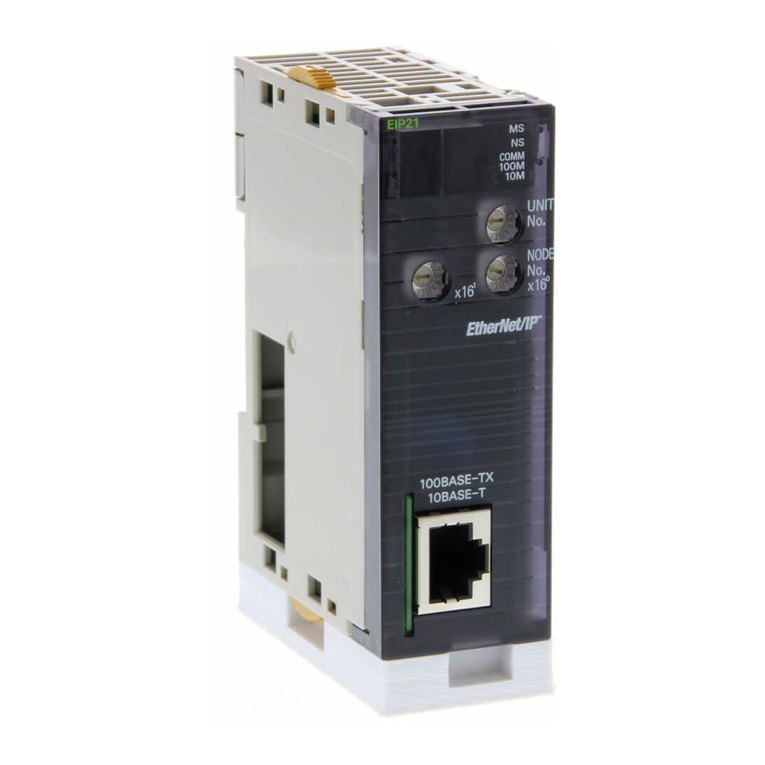
Omron
Omron SYSMAC CJ1W-EIP21 Operation manual
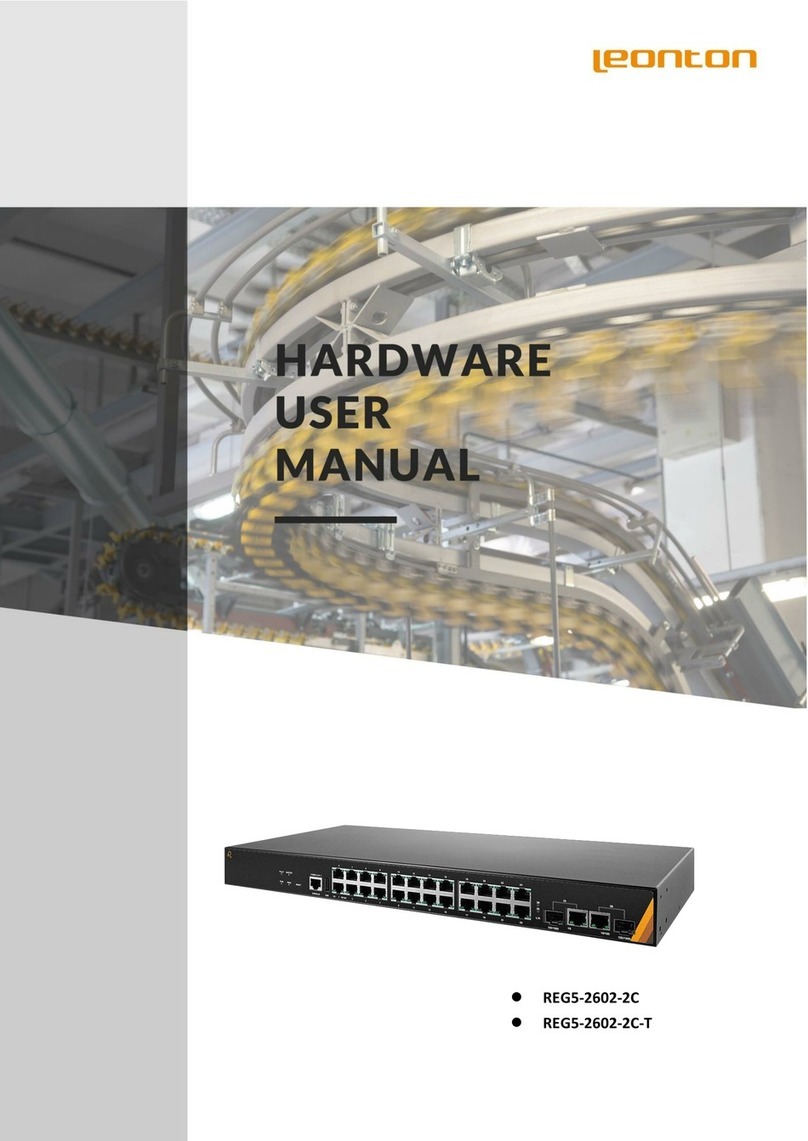
Leonton
Leonton REG5-2602-2C Series Hardware user manual
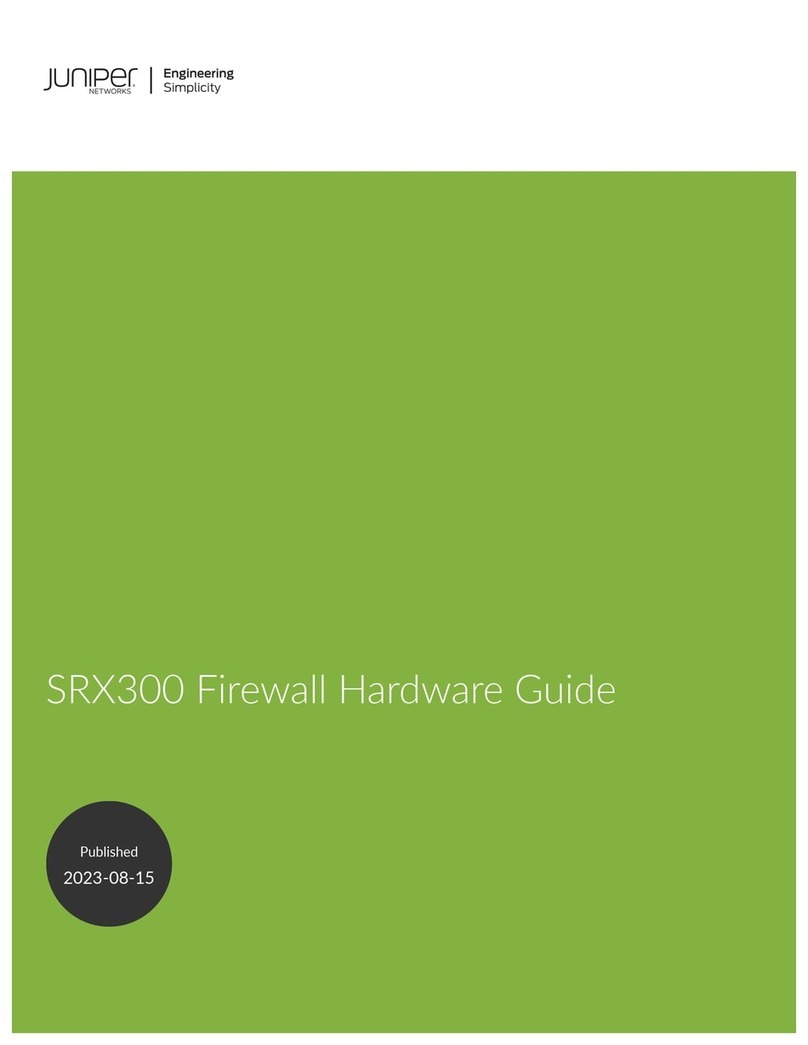
Juniper
Juniper SRX300 Series Hardware guide

jacarta
jacarta interSeptor Pro-XP user manual
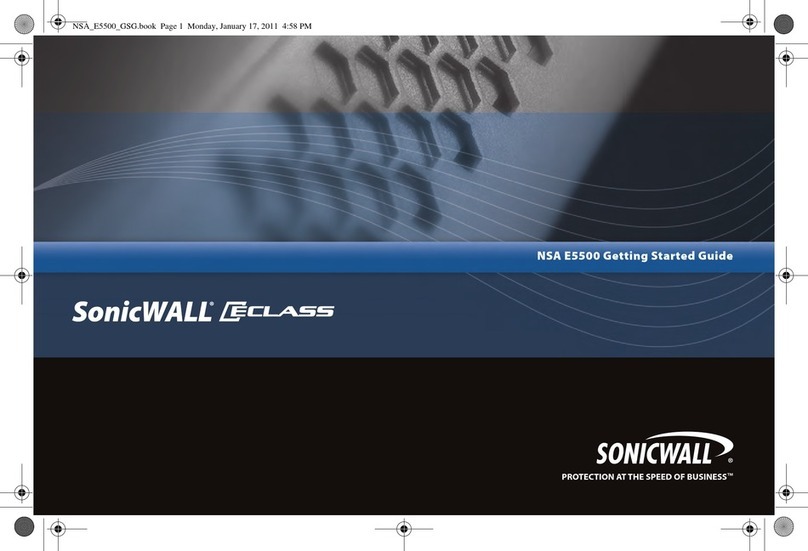
SonicWALL
SonicWALL ECLASS NSA E5500 Getting started guide
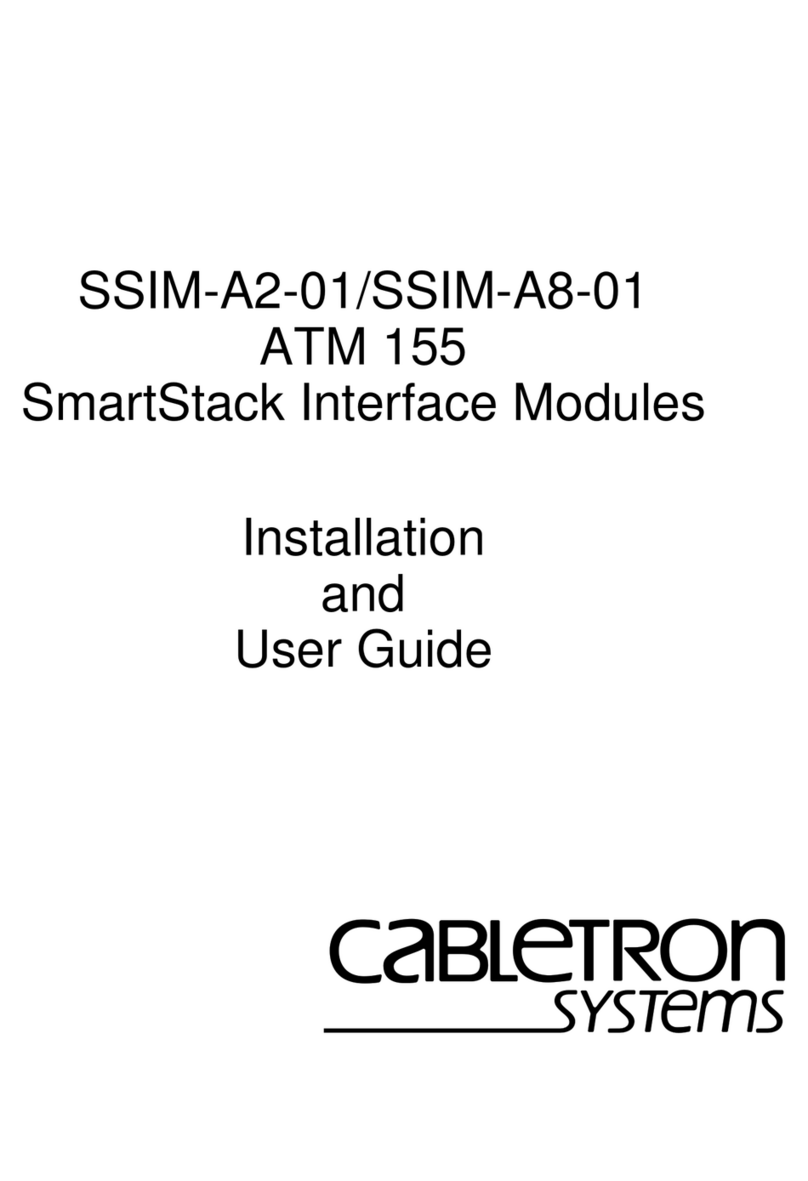
Cabletron Systems
Cabletron Systems SSIM-A2-01 Installation and user guide
